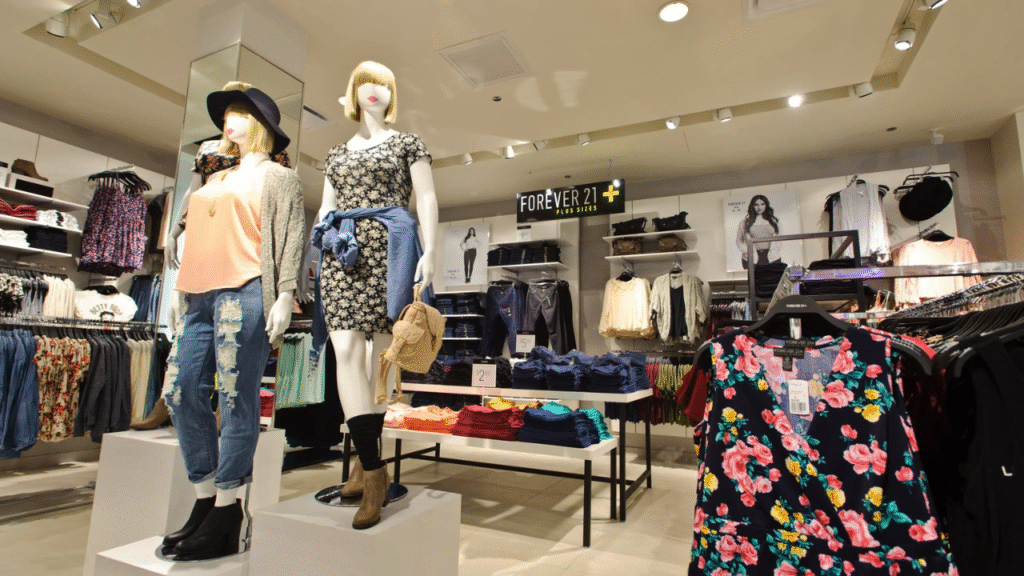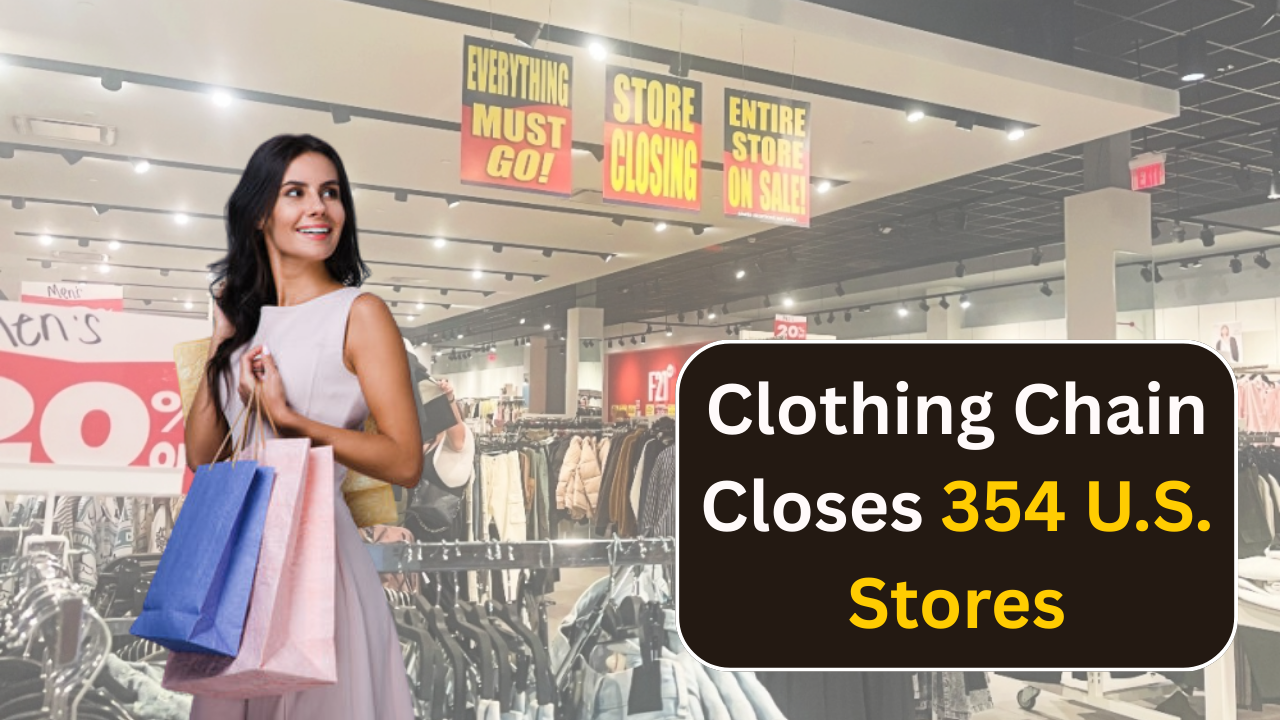It’s the end of an era—but not the kind you can celebrate with a shopping spree. Forever 21, the once-dominant brand for trendy, budget-friendly clothing, is shutting down all 354 of its stores across the United States. Yes, you read that correctly—every single one of them.
This isn’t just another case of a retail hiccup; it’s a massive shake-up in the fast-fashion industry. Known for offering fashionable items under $30, Forever 21 was a go-to store for many shoppers looking for the latest trends at affordable prices. But now, in a surprising turn of events, it’s closing its U.S. operations completely.
How did a brand with such cultural influence and recognition end up in this situation? Let’s take a closer look at why Forever 21 is closing its doors and what it means for the future of retail.
The Rise of Forever 21
Forever 21 began in 1984, founded by Do Won Chang and his wife, Jin Sook, in Los Angeles, California. Originally named “Fashion 21,” the brand quickly attracted attention with its trendy clothes at low prices.
The Chang family’s vision was simple: make fashion accessible and affordable, particularly for young shoppers. The brand’s business model focused on fast fashion, offering the latest trends as quickly as possible at competitive prices.
This strategy worked, and Forever 21 soon became a staple for teenagers and young adults. The store was famous for its high turnover of inventory, meaning that it constantly brought in new stock, giving shoppers fresh options each time they visited.
Forever 21’s malls were filled with vibrant displays and racks of clothing that catered to a wide range of tastes. Over the years, Forever 21 became synonymous with affordable, trendy fashion. It was the go-to spot for those looking to stay on top of the latest styles without breaking the bank.
For decades, Forever 21 thrived, but its fortune was not meant to last forever. What happened to cause this shift in the fast-fashion giant’s success?
The Factors Behind the Closure
The closure of Forever 21’s U.S. stores didn’t happen overnight. It was the result of several factors that contributed to the brand’s decline. Here’s a breakdown of the key reasons for its downfall:
1. The Rise of E-Commerce
The most significant disruption to Forever 21’s business came from the rise of online shopping. E-commerce has been rapidly growing for over a decade, and with the COVID-19 pandemic accelerating this trend, physical retail stores have struggled.
In the past, Forever 21’s customers were young, tech-savvy shoppers who loved to visit malls and physically browse the store’s aisles. However, with the shift to online shopping, consumers now prefer the convenience of shopping from home.
Brands like ASOS, Zara, and H&M were more efficient in catering to this shift by establishing robust online platforms that delivered the same trendy clothing with the added convenience of easy shipping.
Forever 21, despite making efforts to strengthen its e-commerce presence, was always playing catch-up in a rapidly changing marketplace. This meant that Forever 21 lost out to competitors who could offer a better online shopping experience.
2. Financial Struggles and Bankruptcy
In 2019, Forever 21 filed for Chapter 11 bankruptcy, revealing how dire its financial situation had become. The company owed over $500 million to creditors and was forced to close several underperforming stores in an attempt to restructure its debt.
Despite efforts to keep the brand afloat, the company could not recover from the financial pressure. It was clear that the fast-fashion model, which had once been its strength, had become a burden as consumers increasingly turned to more sustainable, quality-conscious alternatives.
The brand’s inability to manage its debt, coupled with its declining sales and shrinking market share, led to the permanent closure of Forever 21’s U.S. stores. While the company continued to operate in other countries and online, the closure of its U.S. stores marked the end of an era for a brand that was once a mainstay in the American retail landscape.
3. Shifting Consumer Preferences
Forever 21’s downfall also stems from a broader cultural shift away from fast fashion. Over the past few years, consumers have become more aware of the environmental and ethical implications of fast fashion.
Brands like Patagonia, Reformation, and Everlane have led the way in promoting sustainable fashion, ethical labor practices, and eco-friendly materials. These brands appeal to a growing segment of the population that values quality, sustainability, and transparency.
Meanwhile, Forever 21 struggled to keep pace with this demand for more ethical fashion. The brand’s business model, focused on rapid turnover and low prices, didn’t align with the new expectations of today’s shoppers.
As a result, many consumers moved toward other brands that offered products with a focus on sustainability. Forever 21 attempted to introduce more sustainable clothing lines, but by then, it was too little, too late.
4. The COVID-19 Pandemic
The COVID-19 pandemic further exacerbated Forever 21’s troubles. With stores closed for months during the lockdowns, the brand was forced to rely even more heavily on e-commerce to maintain sales.
Unfortunately, Forever 21’s digital platform was not prepared for this shift, and it struggled to gain traction with online shoppers. Other brands that had already invested heavily in their digital infrastructure saw better results during the pandemic.
As the pandemic forced consumers to adapt to online shopping, many found new preferences in other digital-first brands. The pandemic also shifted many consumers’ priorities toward shopping for longer-lasting, higher-quality products, further distancing Forever 21 from its once-loyal base.
What Does This Mean for the Future of Retail?

The closing of Forever 21’s U.S. stores is a significant development that highlights several key trends in the retail industry. It signals that traditional brick-and-mortar stores, particularly those in the fast-fashion sector, will need to adapt quickly to survive in an increasingly digital world.
Retailers that survive in the coming years will likely need to embrace e-commerce, prioritize sustainability, and offer higher-quality products. The days of disposable fashion are dwindling, and the future of retail will likely involve greater transparency, ethical production, and more consumer-centric experiences.
1. E-Commerce is Here to Stay
It’s clear that online shopping is no longer a trend—it’s the future. Retailers who ignore the e-commerce shift risk following in Forever 21’s footsteps.
Successful companies will need to offer a seamless online shopping experience, whether they operate entirely online or as part of an omnichannel strategy that blends physical stores with a digital presence.
2. Sustainability Will Be Key
As consumers demand more ethical and sustainable practices from brands, retailers must respond by offering products that align with these values.
Sustainability is no longer a niche—it’s a mainstream expectation. Retailers that fail to adapt risk losing relevance as shoppers gravitate toward brands that prioritize environmental and social responsibility.
What’s Next for Forever 21?
Despite its U.S. closures, Forever 21 may still have a future in international markets. It has already made efforts to adapt its strategy in countries outside the U.S., focusing on online sales and more localized store experiences.
However, the brand must find a way to redefine itself and stay relevant in an industry that is moving toward sustainability and quality over quantity.
The demise of Forever 21 in the U.S. serves as a warning for other fast-fashion brands. To thrive in the future, they will need to innovate and keep pace with consumer expectations. Those who fail to do so may suffer the same fate.



